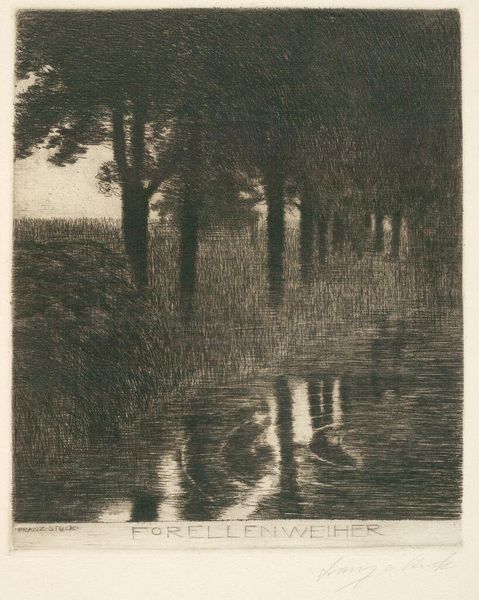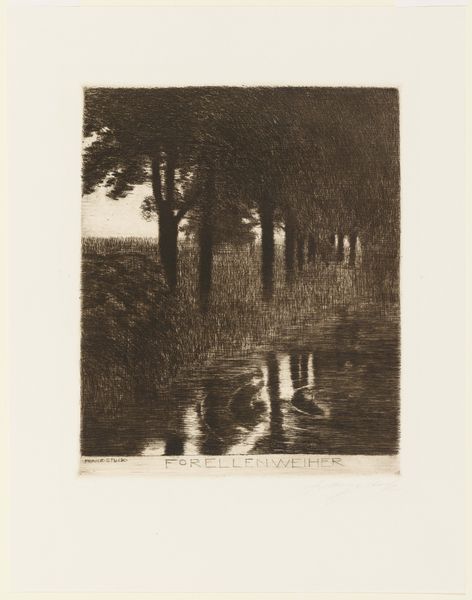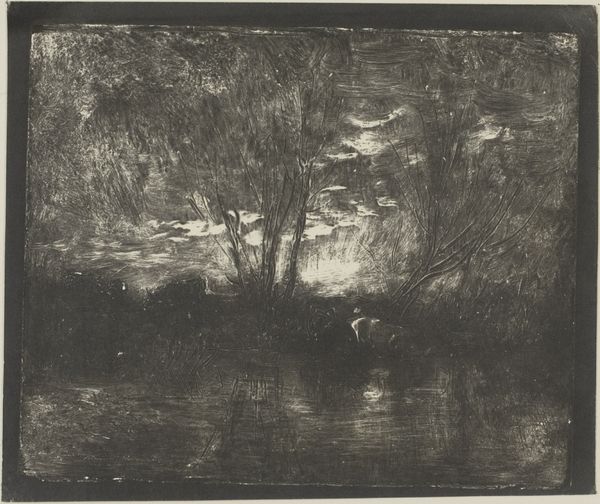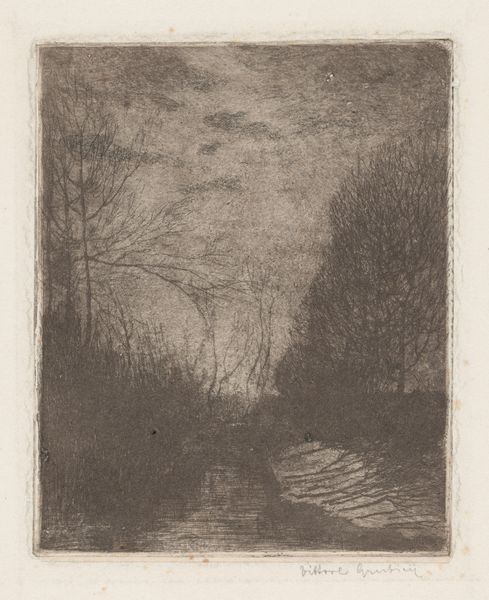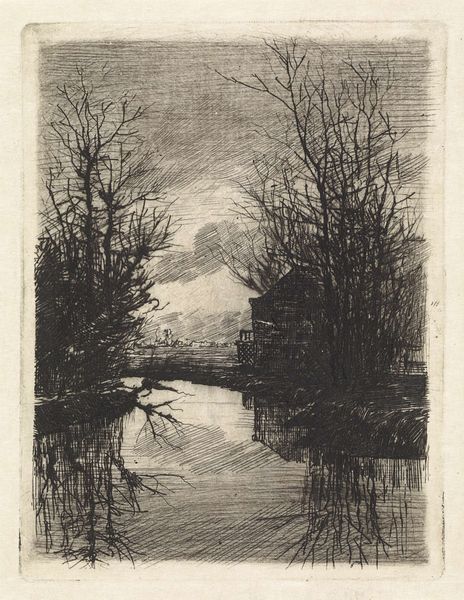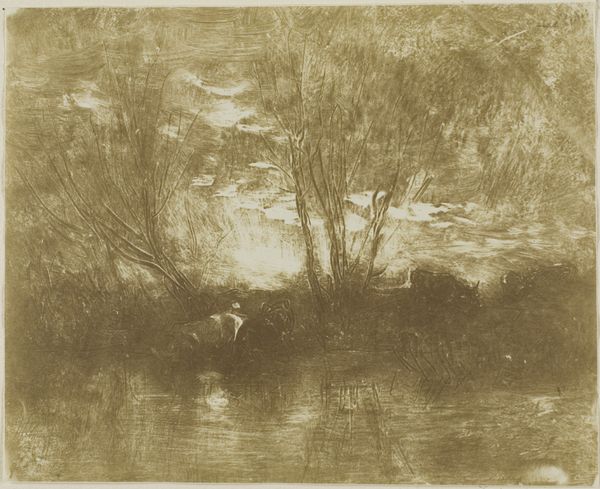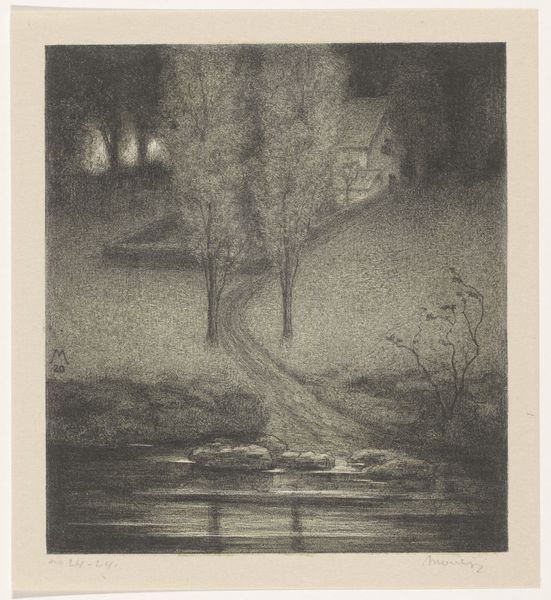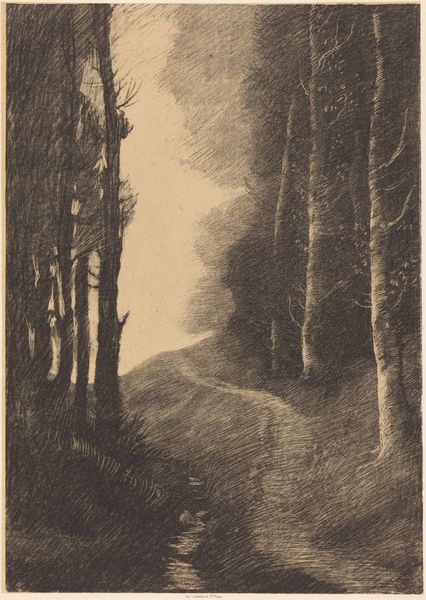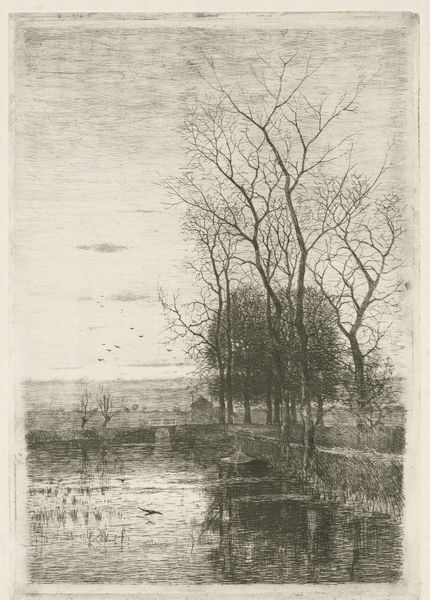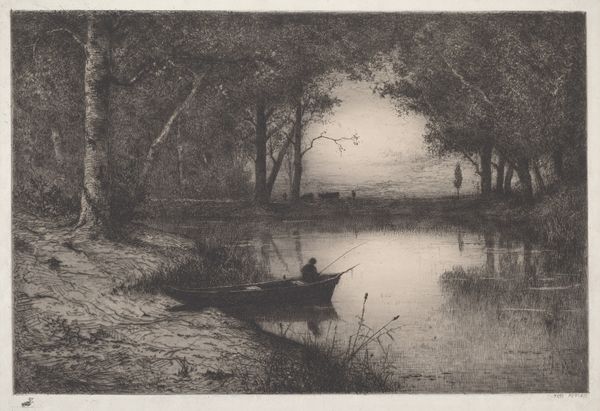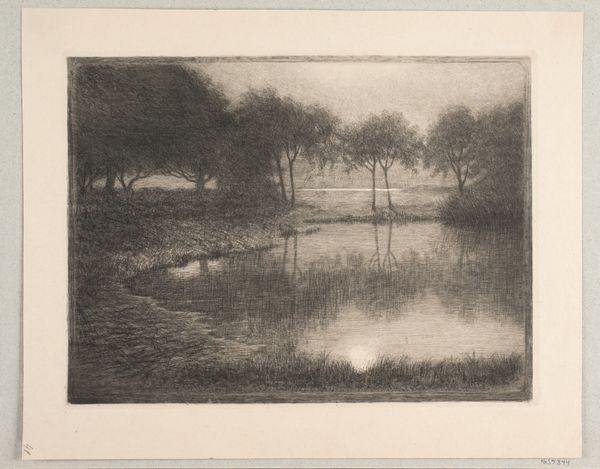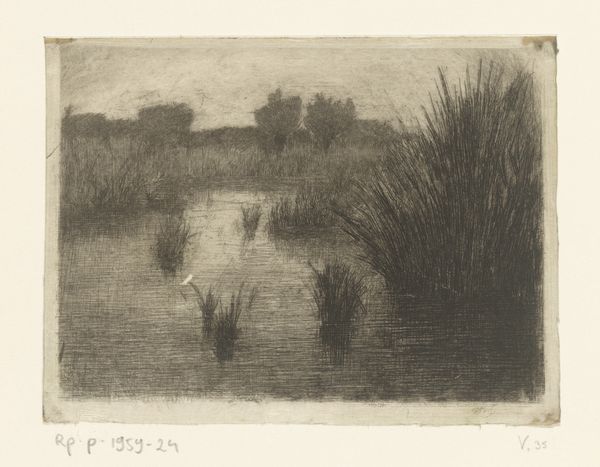
Dimensions: 278 × 232 mm (plate); 491 × 365 mm (sheet)
Copyright: Public Domain
Curator: Looking at Franz von Stuck's etching from 1890, titled "The Trout Pool", it is difficult to shake the oppressive feeling it provokes in me. Editor: Right? I’m getting some serious horror movie vibes. It feels like a deceptively serene landscape scene that's about to go very, very wrong. Maybe a monstrous trout? Or is that just me being dramatic? Curator: Maybe, maybe not! It resonates with the Symbolist movement and the way the group engaged in psychological explorations through artwork. I see a potential critique of German nationalism in this work. Stuck often imbued his landscapes with a sense of foreboding, challenging viewers to consider the darker undercurrents of idealized nature. The density, the potential unseen dangers lurking in that "trout pool" is quite profound. Editor: The texture itself is unnerving—the frantic, scratchy lines sort of vibrate. It's like he's etching anxiety itself onto the paper. It reminds me a little of childhood nightmares where the familiar woods suddenly become sinister. That looming darkness on the periphery. Is it me, or does the single illuminated spot give the image an almost desperate need to not be consumed by darkness? Curator: Definitely! It is through this darkness that he highlights anxieties around industrialization, urbanization, and their impact on the traditional German landscape and cultural identity. Stuck's choice of such a humble subject as a "trout pool" elevates this commentary to something even more insidious and ever-present. This unsettling piece pushes viewers to consider how idyllic national images often mask complex truths and societal unease. Editor: You've hit the nail on the head for me. There's an argument about how idealised memories often mask painful realities of place, and being—like looking back at a memory tinged by nostalgia but knowing the darker facts that occurred around it. Stuck reminds us there’s almost always something wicked and turbulent bubbling just beneath the surface. The human condition perhaps. It really pulls at me, because on a superficial level it's just trees in the water. Curator: I agree. This one makes you think, it makes you question and challenges you to reconsider established frameworks for beauty, and national identity and isn't that the ultimate measure of any work of art?
Comments
No comments
Be the first to comment and join the conversation on the ultimate creative platform.
